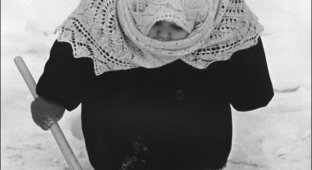In the past, many children from poor families worked from dawn to sunset for a meager salary. You don't wish that kind of childhood on anyone. 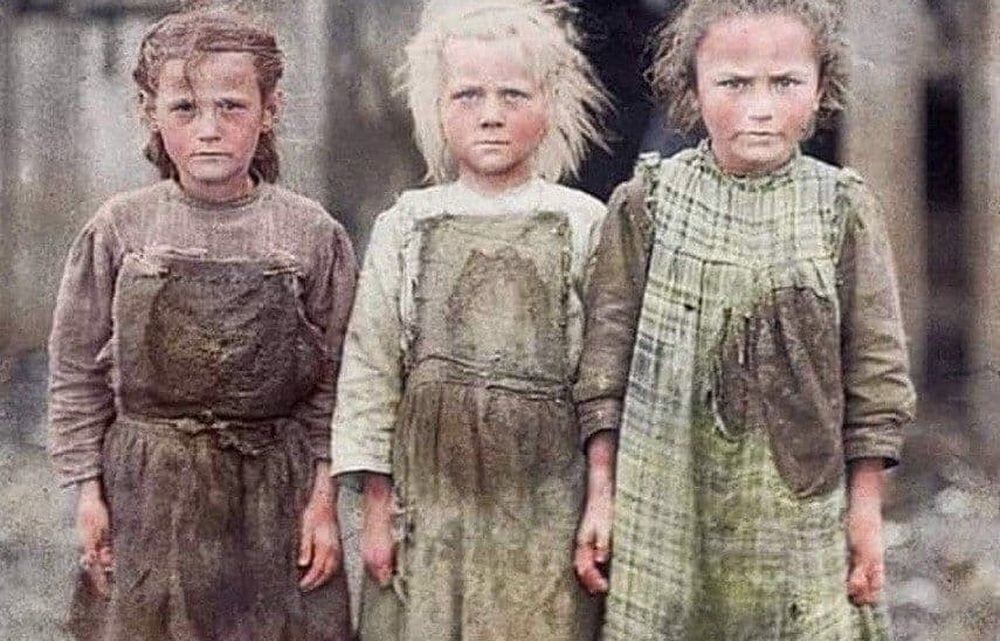
You may have seen this frame online. Often a snapshot used for comic purposes, they say, look what mess. Faith, Hope and Love. Ha ha, hee hee. But in fact, you don't wish anyone such a childhood as three gloomy, tired girls whom photographed in February 1911 after a hard work shift. Them only 6 and 10 years old! Tears well up in my eyes when look at the photos with them and understand how they lived. 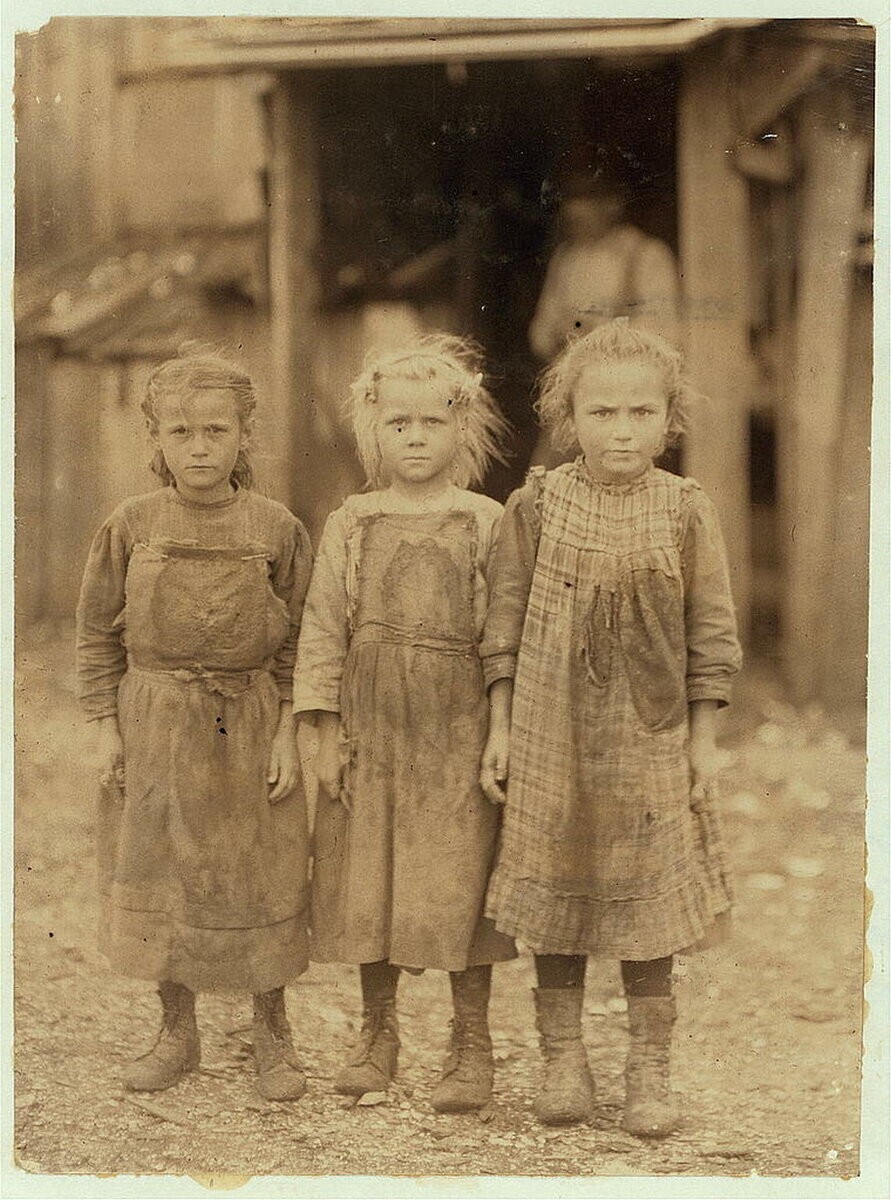
Photo (here and below): Lewis Hine/Public domain.
Josie and Bertha are six, and Sophie is ten. The place is tiny the town of Port Royal in South Carolina (less than 15 thousand live there today Human). Despite their young age, girls are employees of the company Maggioni Canning Co., specialized in premium quality oysters. This firm is still operating today and is often reminded of unbearable working conditions of workers 100 years ago. Although ... there were times then completely different and children from poor families everywhere were engaged in non-child labor. 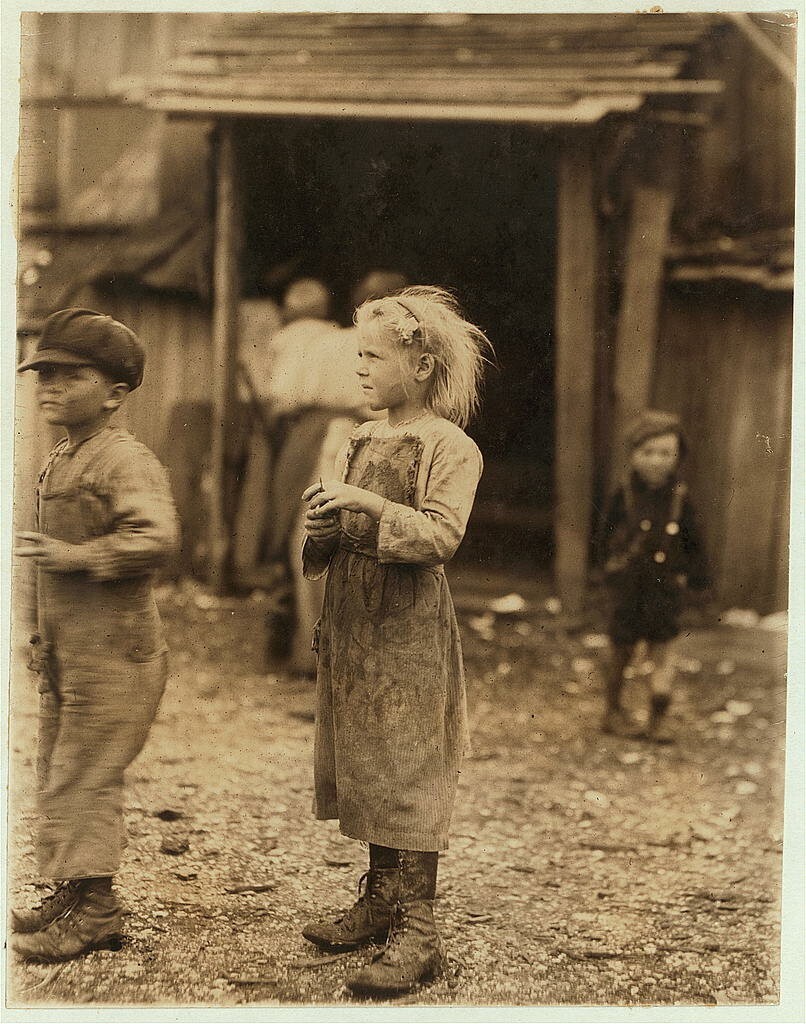
6-year-old Berta worked on a par with everyone.
Josie, Bertha and Sophie were oyster cleaners. Every day they started working at 4 o'clock in the morning. Like the other kids in the company the girls worked four hours before school and three after. Payment depended on the one who manages to sort out how many pots of oysters, on average it worked out from 9 to 15 dollars a week. The children were usually paid noticeably less than for adults - with an equally fulfilled norm. And even inequality reigned among the children - boys received more simply by fact. 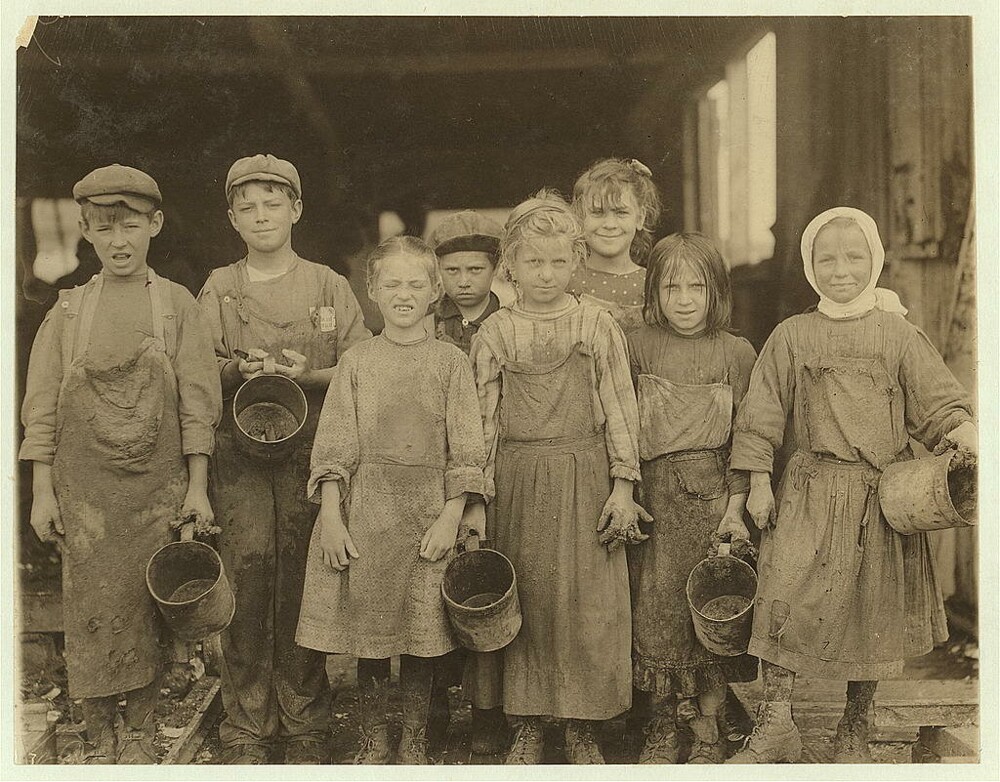
10-year-old Sophie has already dropped out of school. mother who worked together with her, explained that there was no time to study, her daughter worked all the time. And how can you really study after the morning shift? The children were lethargic and defocused. They knew that after school they would work again and help household chores. But there was no way out. The poor survived as best they could. 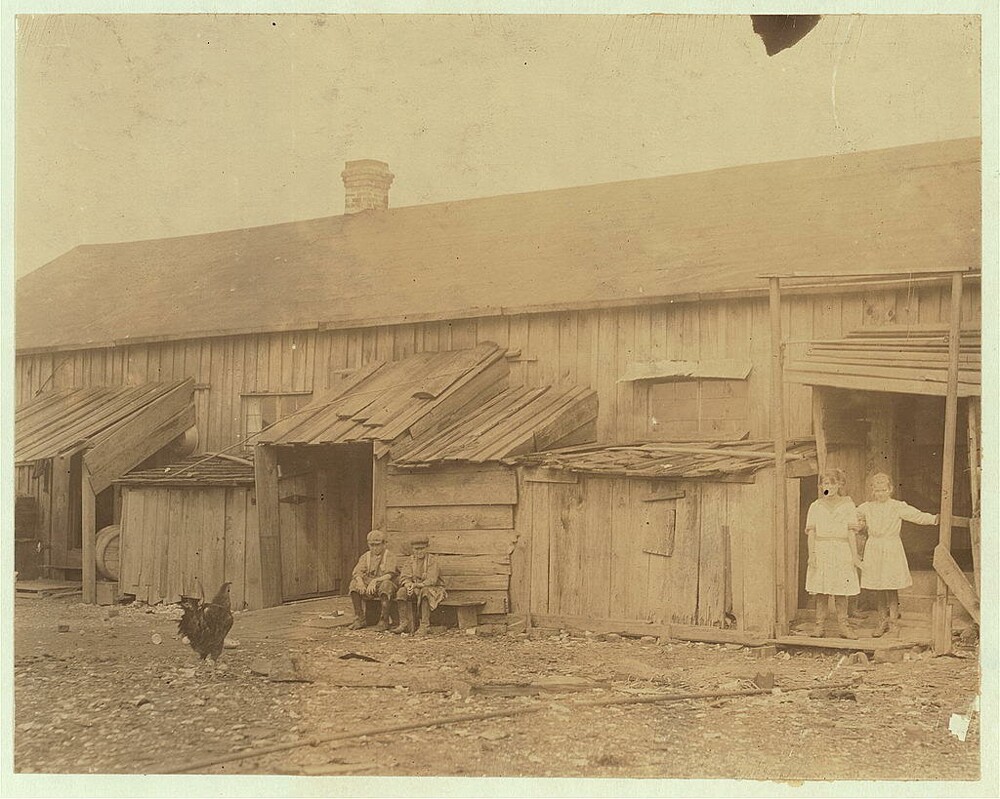
Factory workers in Port Royal lived in such barracks.
Where are the pictures from? They were made by an amazing man - Lewis Hine. At the soul of the photographer was rooting for the children. Whom did he not pretend to get to production and film working conditions: supplier equipment and even a seller of Bibles. He filmed in factories and streets city and its photographs influenced the fact that the situation with children-non-children slowly began to change. 
10-year-old Sophie looked after the younger children.
Hein's photographs are historical documents showing the era from the wrong side. How did the lives of Josie, Bertha and Sophie turn out? Have they been rewarded for their hard work, have they found happiness? Who knows. We we can only hope so. 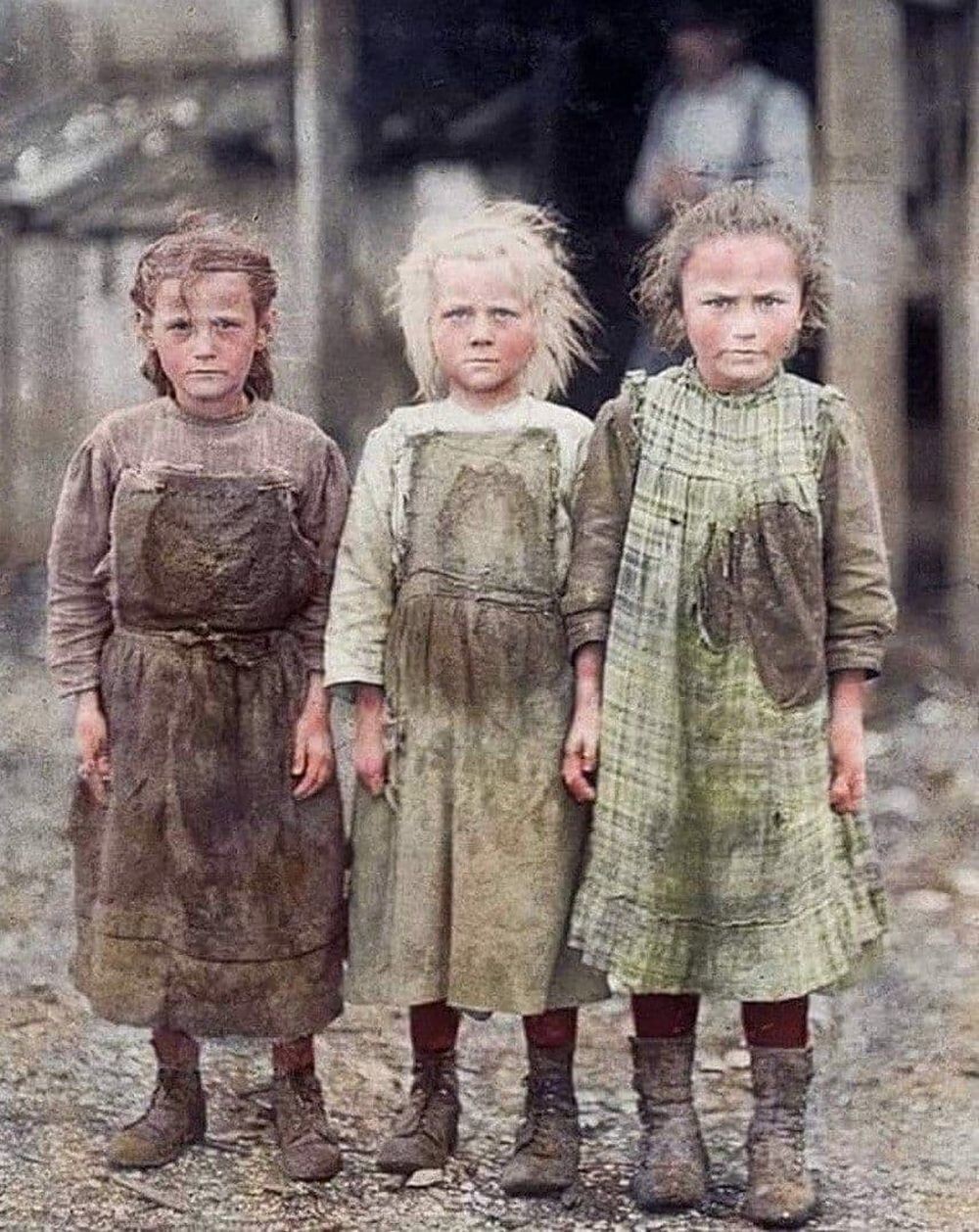
Josie, Berta and Sophie, modern colorization.
Add your comment
You might be interested in:













